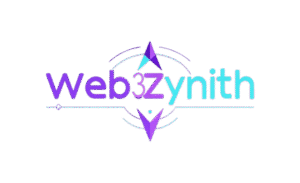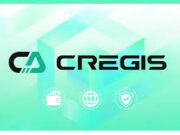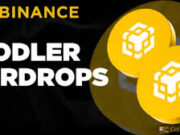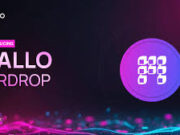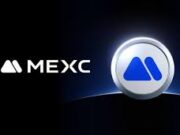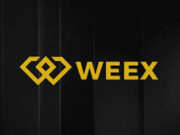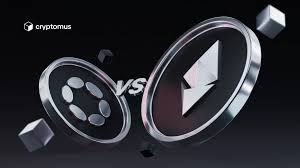When people talk about the future of blockchain, Ethereum almost always dominates the conversation. It’s the pioneer of smart contracts and decentralized applications (dApps), with thousands of developers building on it. But in the same breath, another name is rising steadily—Polkadot, a blockchain network designed with interoperability at its core.
Both Ethereum and Polkadot are powerful ecosystems, but they represent different philosophies:
- Ethereum prioritizes security and decentralization, aiming to be the most trusted, neutral smart contract platform.
- Polkadot puts interoperability and scalability at the center, enabling different blockchains to communicate and share data.
So which one has the edge? Let’s break down how these platforms compare in their battle between interoperability vs. security.
Ethereum: Security First, Interoperability Later
Ethereum is the world’s second-largest blockchain by market cap (after Bitcoin) and the most widely used platform for dApps, DeFi, NFTs, and token issuance. Its success is rooted in its security-first design.
How Ethereum Ensures Security
- Proof of Stake (Ethereum 2.0): After “The Merge” in 2022, Ethereum now relies on validators who stake ETH instead of energy-hungry miners. This makes attacks economically expensive.
- Network Effects: With the largest developer community in Web3, Ethereum benefits from constant security reviews, audits, and innovations.
- Battle-Tested Infrastructure: From DeFi exploits to NFT booms, Ethereum has withstood years of real-world stress tests.
Weakness: Interoperability
While Ethereum is secure, its design doesn’t easily allow cross-chain communication. Most interoperability today relies on bridges, which have proven to be vulnerable—billions of dollars have been lost in cross-chain hacks.
Ethereum is focusing on Layer 2 scaling (Arbitrum, Optimism, zkSync) and future sharding upgrades, but native interoperability isn’t its strongest suit.
Polkadot: Interoperability as a Core Design
Polkadot, created by Ethereum co-founder Gavin Wood, was designed to solve a key problem: blockchains working in isolation. Unlike Ethereum, Polkadot’s architecture centers around interoperability and scalability.
How Polkadot Works
- Relay Chain: The central chain that ensures security and consensus.
- Parachains: Independent blockchains that connect to the relay chain, each with specialized purposes (DeFi, gaming, identity, etc.).
- Bridges: Allow Polkadot to connect with external blockchains like Ethereum or Bitcoin.
Strength: Cross-Chain Communication
Polkadot’s parachains can share information and assets seamlessly. This enables developers to build applications that span multiple chains without the security risks of external bridges.
Weakness: Security Trade-Off
While Polkadot provides shared security through the relay chain, its overall ecosystem is younger and less tested compared to Ethereum. Some critics argue that spreading resources across multiple parachains could expose vulnerabilities if not carefully managed.
Head-to-Head Comparison: Ethereum vs. Polkadot
| Feature | Ethereum (Security) | Polkadot (Interoperability) |
|---|---|---|
| Launch Year | 2015 | 2020 |
| Consensus Mechanism | Proof of Stake | Nominated Proof of Stake |
| Core Strength | Security, decentralization, developer base | Interoperability, scalability, parachain design |
| Weakness | Limited interoperability, high fees | Less proven security, younger ecosystem |
| Ecosystem Size | 4,000+ dApps, largest DeFi/NFT base | 100+ parachains, growing Web3 projects |
| Future Roadmap | Sharding, Layer 2 rollups | Expanding parachain slots, stronger bridges |
Developer Appeal: Which Attracts More Builders?
- Ethereum attracts developers who want maximum security and access to the largest user base. Its extensive tooling, documentation, and liquidity make it the default choice for DeFi and NFT projects.
- Polkadot appeals to developers who want customization and cross-chain functionality. By launching parachains, developers can optimize blockchains for specific use cases while still benefiting from Polkadot’s shared security.
Use Cases in the Real World
- Ethereum Use Cases: DeFi platforms (Uniswap, Aave), NFT marketplaces (OpenSea), DAOs, and gaming dApps.
- Polkadot Use Cases: Projects like Moonbeam (Ethereum-compatible smart contracts), Acala (DeFi hub), and Phala Network (privacy-focused cloud computing).
Ethereum dominates in raw adoption, but Polkadot is carving out a niche in Web3 infrastructure and cross-chain solutions.
The Battle of Philosophies: Security vs. Interoperability
This is where the real battle lies:
- Ethereum’s Priority → Protect the network at all costs, even if that means slower innovation in cross-chain interoperability.
- Polkadot’s Priority → Enable a multichain future, even if it means operating with a smaller community and taking on the risks of newer technology.
In many ways, they aren’t direct competitors but rather complementary. Ethereum provides the secure settlement layer, while Polkadot acts as a bridge ecosystem that could make Ethereum’s assets more usable across chains.
Looking Ahead: The Future of Both Blockchains
- Ethereum’s Future: With sharding and Layer 2 scaling, Ethereum could lower fees and improve efficiency, maintaining its position as the most trusted dApp hub. Its challenge is adopting safer interoperability models.
- Polkadot’s Future: If Polkadot succeeds in attracting more developers and users, it could become the “internet of blockchains,” connecting ecosystems in ways Ethereum alone cannot. However, it must prove its security model can scale without major vulnerabilities.
Final Thoughts
The debate of Ethereum vs. Polkadot is less about which is “better” and more about what you value in a blockchain:
- If you prioritize security, decentralization, and adoption, Ethereum remains the clear leader.
- If you want interoperability, scalability, and customization, Polkadot offers a compelling alternative.
In the future, both may coexist, with Ethereum as the secure foundation and Polkadot as the interoperability layer that connects blockchains into a true Web3 network.
Sources
- Ethereum Foundation – Ethereum.org
- Polkadot Network – Polkadot.network
- Wood, G. “Polkadot: Vision for a Heterogeneous Multi-Chain Framework” (2016 Whitepaper)
- CoinDesk – “Ethereum Merge Explained” (2022)
- Messari Research – Reports on Polkadot Ecosystem Growth (2023)
